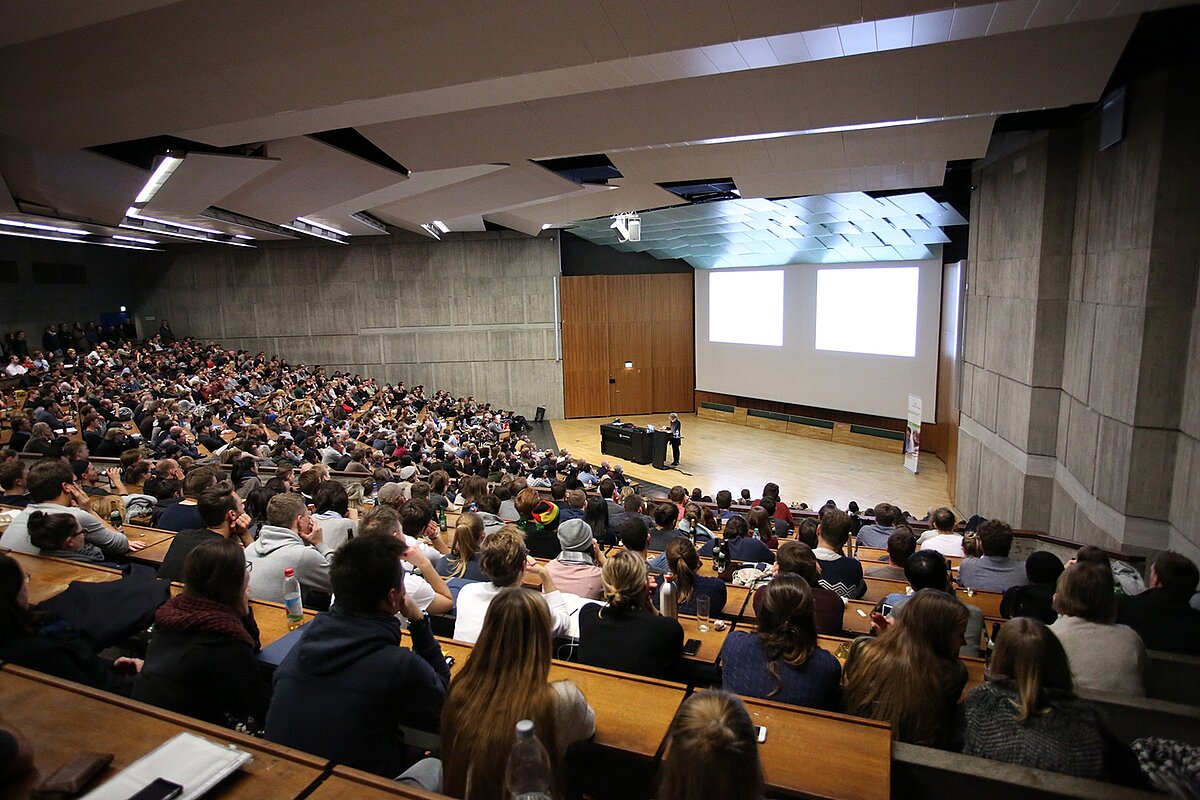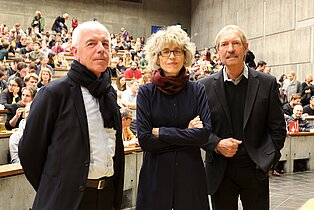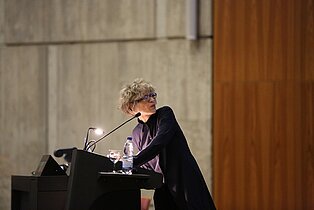Review | Annette Gigon at the 2017 November Talks in Stuttgart
On November 15, Swiss architect Annette Gigon from the Zurich-based office Gigon / Guyer was invited to the University of Stuttgart's Faculty of Architecture to give the second lecture of the 2017 November Talks. The lecture hall was once again filled beyond capacity. Peter Cheret, professor at the Institute for Building Construction and Design and the driving force behind the annual architecture forum, welcomed the audience and introduced the speaker.
Together with her business partner Mike Guyer, Annette Gigon founded the architecture office Gigon / Guyer in 1989 after the two of them had earned their degrees at ETH in Zurich. Gigon was once again drawn to an institute of higher learning in 2001 – first as a guest lecturer at EPFL Lausanne and then at ETH Zurich, where, together with her business partner, she has taught architecture and construction as a full professor at the architecture department since 2012.
Annette Gigon's lecture showed that her office has not committed itself to certain building types or a specific design language – a Gigon / Guyer-style, so to say. She presented projects with different building functions and uses, which ranged from museums and office buildings to residential construction projects, various sizes and different design approaches.
The thread that connects the works of Gigon / Guyer is a pronounced sense of materiality, haptics and texture, which distinguish their buildings. In the form of different "curtains", as Annette Gigon characterises the envelopes of the buildings, textile structures provide monolithic buildings with a sense of lightness and transparency.
Using the example of the windmill-like office complex for the Swiss bank UBS, located on Lagerstraße in Zurich, which the architect introduced at the start of her lecture, she showed the effects that the utilisation of different materials can have. While the buildings, which were designed by different architecture offices (in addition to Gigon / Guyer, Max Dudler and David Chipperfield were also represented) form a harmonious ensemble and are connected to each other via bridges and multi-storey passages, the transparent and light-seeming structure made from metal-coated glass, which enshrouds the building like a delicate fabric, marches to a different drummer.
The perforated Tetra sheet metal, which envelopes the Henze & Ketterer gallery – an art depot in Wichtrach – seems more like a fluttering, light curtain than a heavy metal skin. The office also plays with the issue of permeability in the expansion of a neoclassical villa, to which a concrete loggia and a superstructure built with metal rods were added. The latter sits atop the strong foundation like a basket structure.
Another important aspect of the work of Gigon / Guyer, which goes beyond the play with shapes and materialisation, was on display at the Prime Tower in Zurich: Communication with its surroundings. For example, the tower alters its appearance from slim to wide – via overhangs and recesses – as well as its surface, which changes from reflective to reflecting, and its exterior, which occasionally also provides glimpses of the interior.
The fact that the architects always keep an eye on the environment and their surroundings – and intelligently respond to them with their buildings – is evident, for example, when they are using the environment as a guide for the location and positioning of open and closed surfaces. When it comes to the selection of lighting, they choose unusual roof shapes to ensure natural lighting.
While no specification concerning the selection of stylistic elements, design language or building typology is apparent in Gigon / Guyer projects, there are some clearly distinguishable features. These include a specialisation with regard to how materiality is handled, as well as its exemplary and skilful use, the interplay of the interior and exterior, insights and outlooks, and the integration of the environment. It is these features that make Gigon / Guyer buildings unique and underscore the office's versatility.
November Talks
The successful “November Reihen”, a lecture series on contemporary architecture, has been funded by the non-profit Sto Foundation since its launch in 2006. Stuttgart, Graz, Milan, Paris, Prague and London are the six venues . Exciting work reports by renowned architects can be experienced there.














